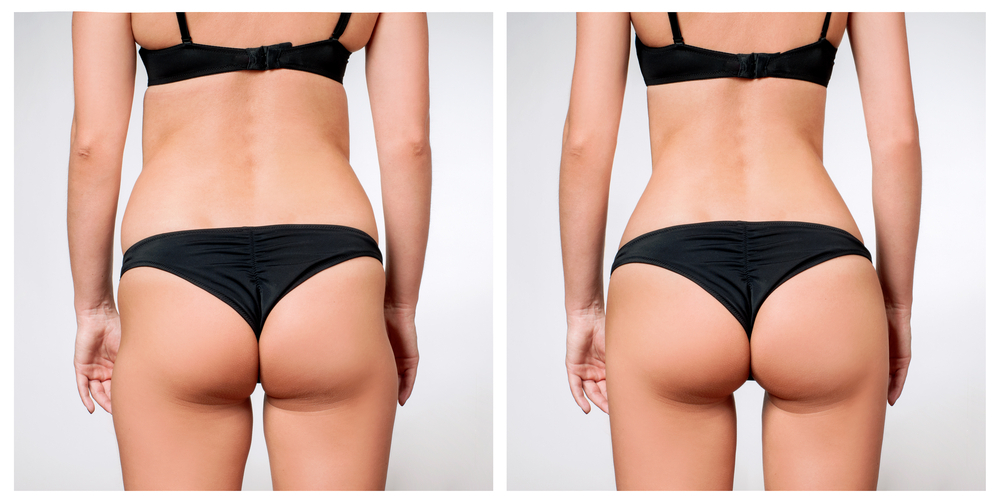Liposuction is a body-sculpting procedure that enhances your shape by removing fat deposits from certain areas of the body. Liposuction is only minimally invasive, but there are still some risks involved. Before you make any decisions about having liposuction, it’s important to understand those risks.
The most common liposuction technique is tumescent liposuction. In this procedure a plastic surgeon uses a tool called a cannula to suction excess fat from defined areas of your body. This is carried out under anesthesia. A typical tumescent liposuction procedure takes an hour or less.
The risks of the liposuction procedure include:
Surgical Risks
Anesthesia Allergy or Toxicity
The anesthetic used in liposuction is typically lidocaine. A small number of people (fewer than 1%) risk having an allergic reaction to lidocaine. There’s also a small risk of having a non-allergic toxic reaction. If a patient does have a dangerous reaction to lidocaine, they are given drugs to counteract the toxic effects.
Damage to Deep Tissues
If a cannula penetrates too deeply, it may damage tissue around the site of the plastic surgery. This damage could affect nerves, blood vessels, or muscles, depending on the site of the surgery. In some cases, the lungs or other abdominal muscles may be affected.
Thermal Burn or Heat Injury
This applies if you’re having ultrasound-assisted liposuction or laser-assisted liposuction. In these procedures, ultrasound or laser energy is used to partially liquefy the fat. This makes it easier to remove. The cannula used in these cosmetic procedures gets very hot. If it comes in contact with your skin, it can cause burns and blisters.
Post-Surgery Risks and Complications
Bruising
It’s very common to have some bruising at liposuction incision sites. Bruising is temporary and usually fades after a few weeks.
Changes in Skin Sensitivity
Skin may become less sensitive or numb at or near incision sites. This is usually temporary but, in some cases, may persist for a longer period of time. For some people, the changes can be permanent.
Deep Vein Thrombosis
Deep vein thrombosis is a blood clot that develops in a vein deep within the tissue. If clots develop, it’s usually in the legs. Deep vein thrombosis causes swelling, pain, and tenderness in the affected area. The skin may also appear reddened at the site.
Embolism
If part of a blood clot detaches and enters the bloodstream, there’s a risk it may travel to the lungs or the brain. There’s also a risk that a piece of fat might detach from a liposuction site and enter the bloodstream.
If the blood clot or fat reaches the lungs, it can cause a pulmonary embolism. Symptoms of pulmonary embolism include:
- Difficulty breathing
- Rapid or irregular heartbeat
- Chest pain
- Coughing up blood
- Lightheadedness or fainting
Pulmonary embolism is a serious and life-threatening condition. If any of these symptoms develop, don’t wait to talk to a doctor—head right to the emergency room.
A blood clot or fatty tissue can also cause a brain embolism if it blocks an artery that provides the brain with blood and oxygen. This can lead to a stroke. Symptoms happen suddenly and include:
- Weakness or numbness on one side of the body
- Confusion or trouble speaking
- Vision problems
- Dizziness
- Loss of balance or trouble walking
- Severe headache
Fluid Build-Up
Fluid may build up underneath the skin. The site where this happens is called a seroma. Seromas usually go away on their own, but if they persist, they can be drained with a needle.
Irregular Skin Pigmentation
Cannula damage caused during the liposuction surgery may lead to small pigment spots on the skin. These are often permanent but in some cases fade over time.
Irregular Skin Contouring
After the procedure your skin might have surface irregularities like waviness, bumpiness, looseness, or rippling. This can happen if fat was removed unevenly or if your skin has low elasticity. Poor wound healing may also cause the skin to appear irregular. These changes are often temporary, but in some cases might be permanent.
Persistent Swelling
Areas where fat is removed will swell significantly after liposuction. Most people find that most of the swelling is gone around the four-week mark. It’s normal for a small amount of swelling to persist for up to several months.
There is a small risk that a seroma (a build-up of excess fluid under the skin) becomes infected and develops into an abscess. The abscess may drain pus or foul-smelling fluid. Seek medical treatment if you think you have an abscess. You may need antibiotics to clear the infection.
Poor Wound Healing
Eating a nutritious diet and avoiding smoking are both important to help your body heal after surgery. It’s especially important to avoid smoking, as this can delay wound healing and increase your infection risk.
Skin Infection
Skin infections are rare, but since they’re potentially life-threatening, it’s vital to seek treatment even for a minor infection. For smokers, the risk of infection increases, as smoking delays wound healing.
Worsening of Cellulite
Liposuction isn’t a cure for cellulite. I some cases, it can make cellulite more visible. This is because cellulite is partially masked by fat. If that fat is removed, the cellulite becomes more prominent.
If you have cellulite, there’s no way to predict in advance what your liposuction results might be. A skilled plastic surgeon can minimize the risks but can’t guarantee to eliminate cellulite completely with liposuction alone. A treatment like Cellfina® is better suited for that.

Can You Reduce Your Liposuction Risks?
Like all surgeries, liposuction has some risks. But there are things you can do before and after surgery to reduce those risks. Most importantly, be sure to follow all the advice of your plastic surgeon before your liposuction. If you’re a smoker, stop smoking as far in advance of your surgery as possible. This is important to reduce complication risks and help your body heal. You might also be asked to modify your medication routine. For instance, if you take blood thinners, your plastic surgeon might ask you to stop taking them as part of preparation.
After your surgery you’ll get some instructions about how to take care of yourself for the next few weeks. For instance, you’ll be given a compression garment to wear and recommendations about your physical activity level. Whatever instructions your surgeon gives you, be sure to follow them to the letter. This will help to both minimize your risks and improve the results you get from your liposuction.
Whether you’re just starting to think about liposuction or have already decided to go ahead with it, learning about the process can help you understand the risks. If you have any questions or concerns about liposuction risks, reach out to us. Dr. Ver Halen is an experienced, experienced plastic surgeon, and he’s ready to help put your mind at ease.







